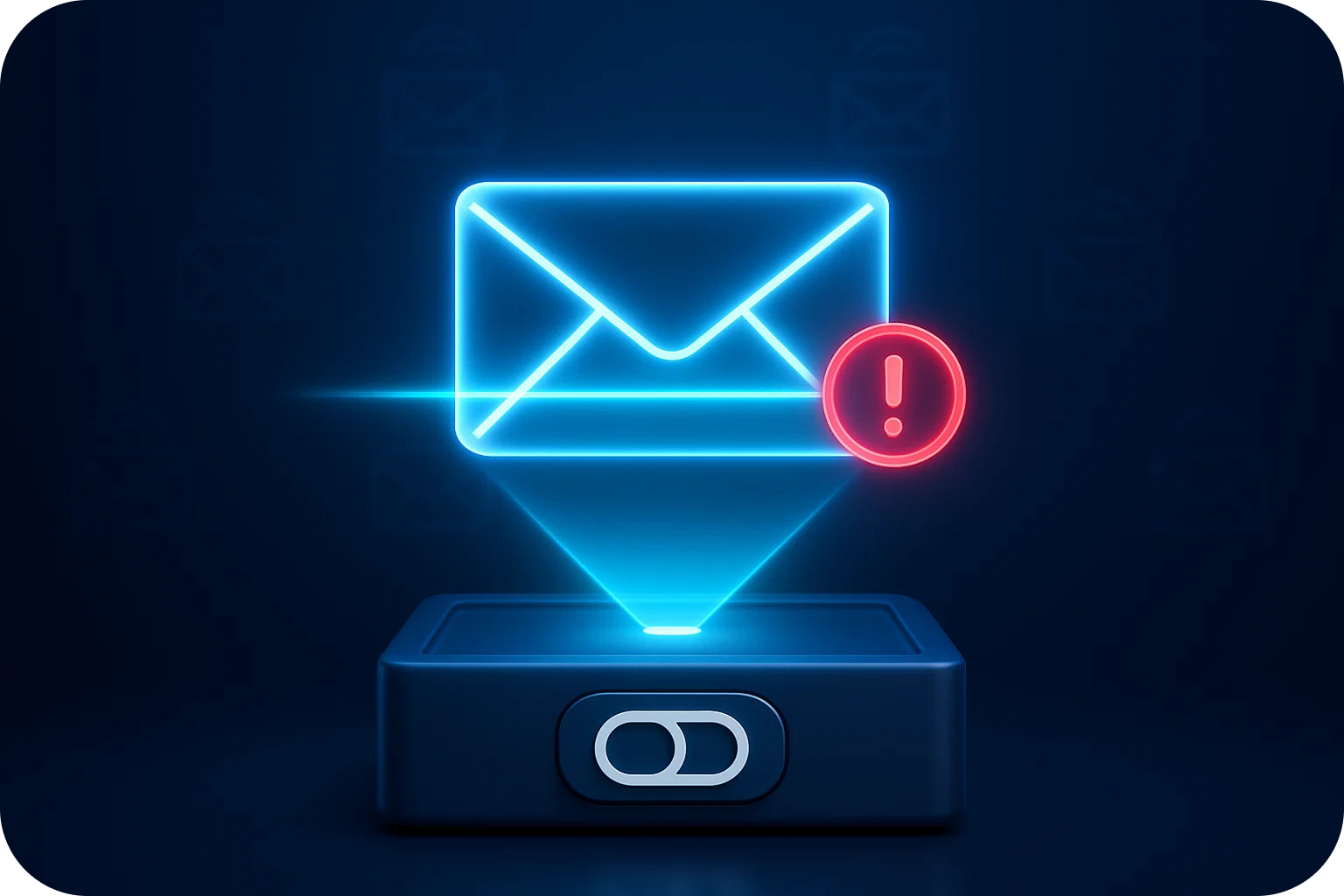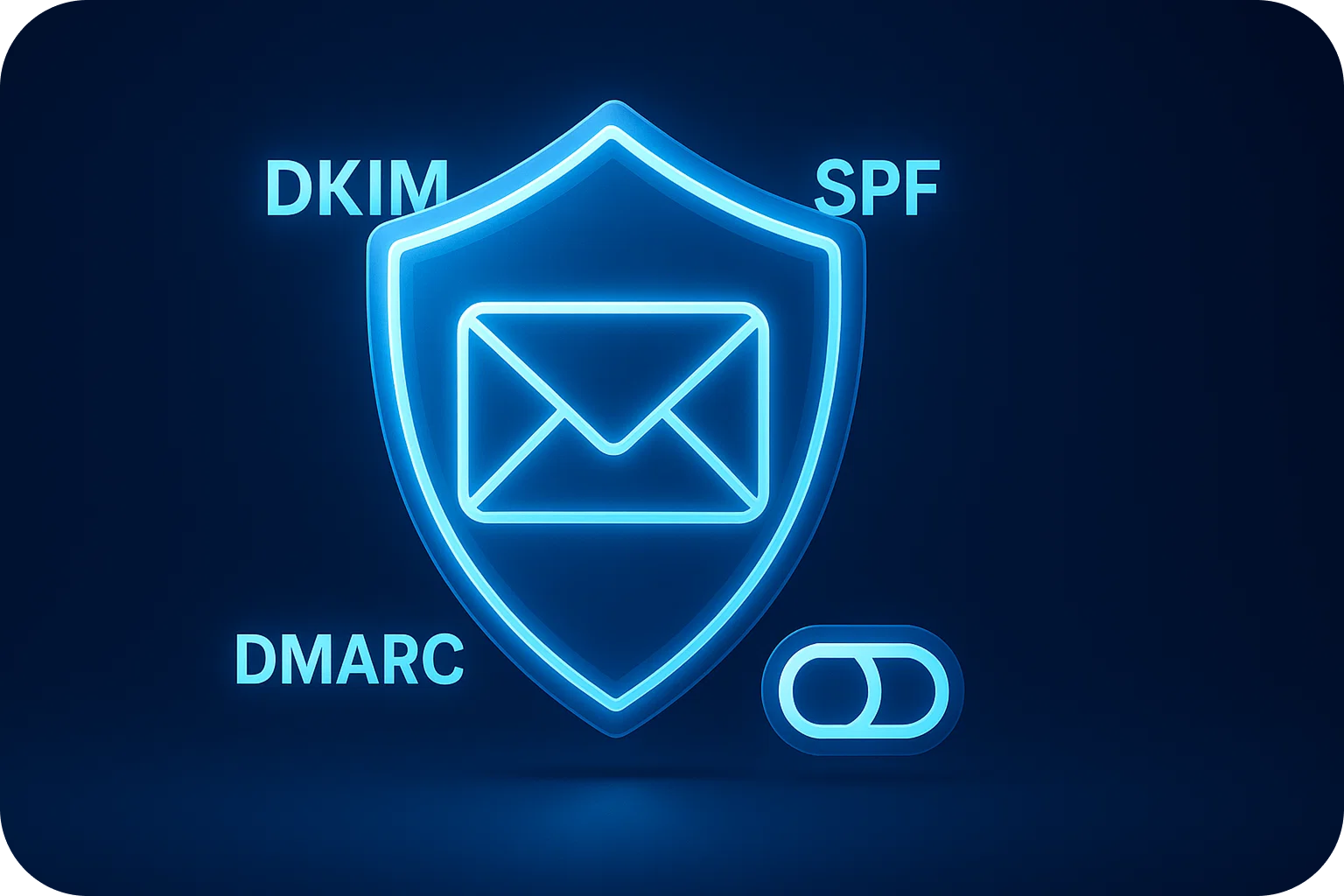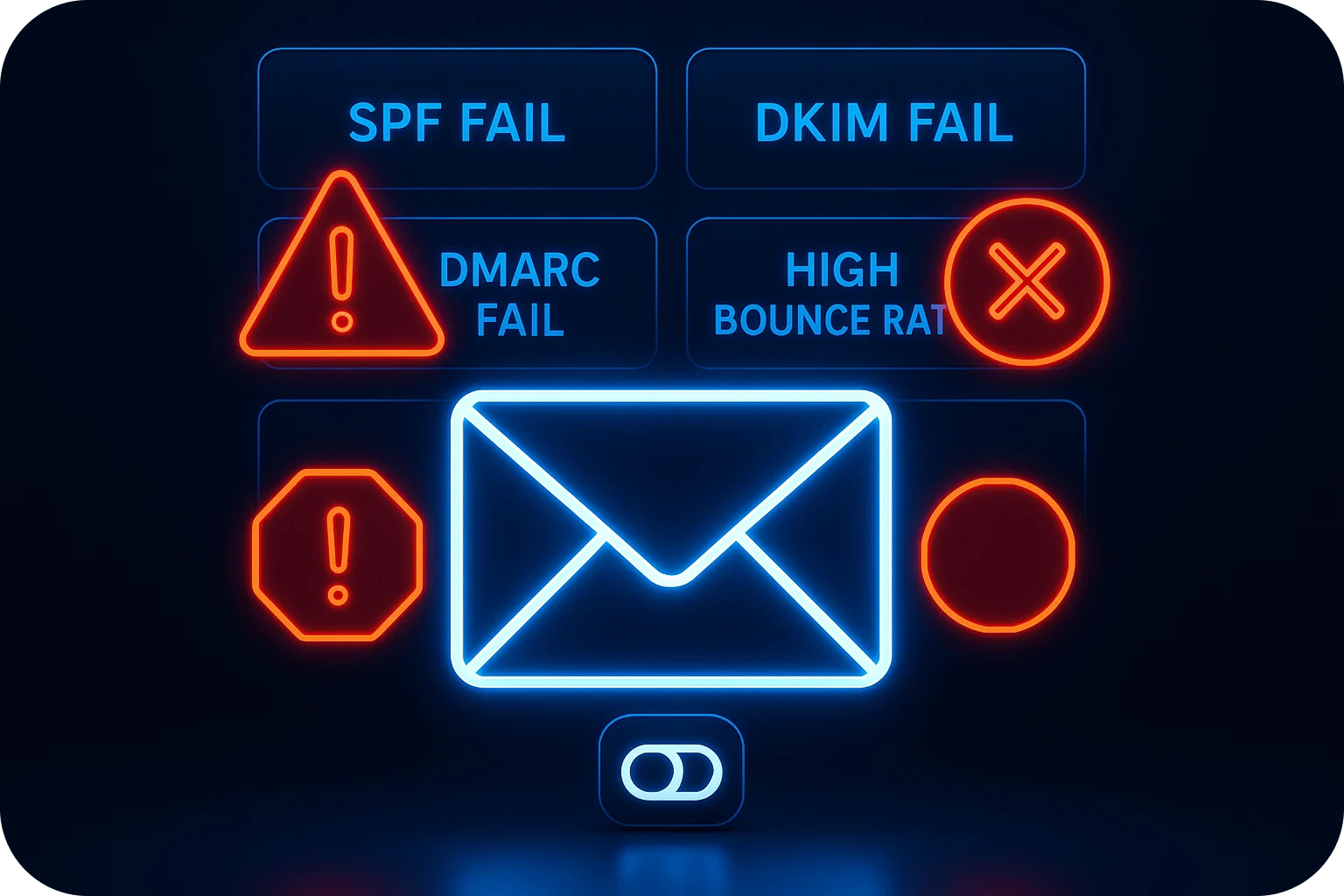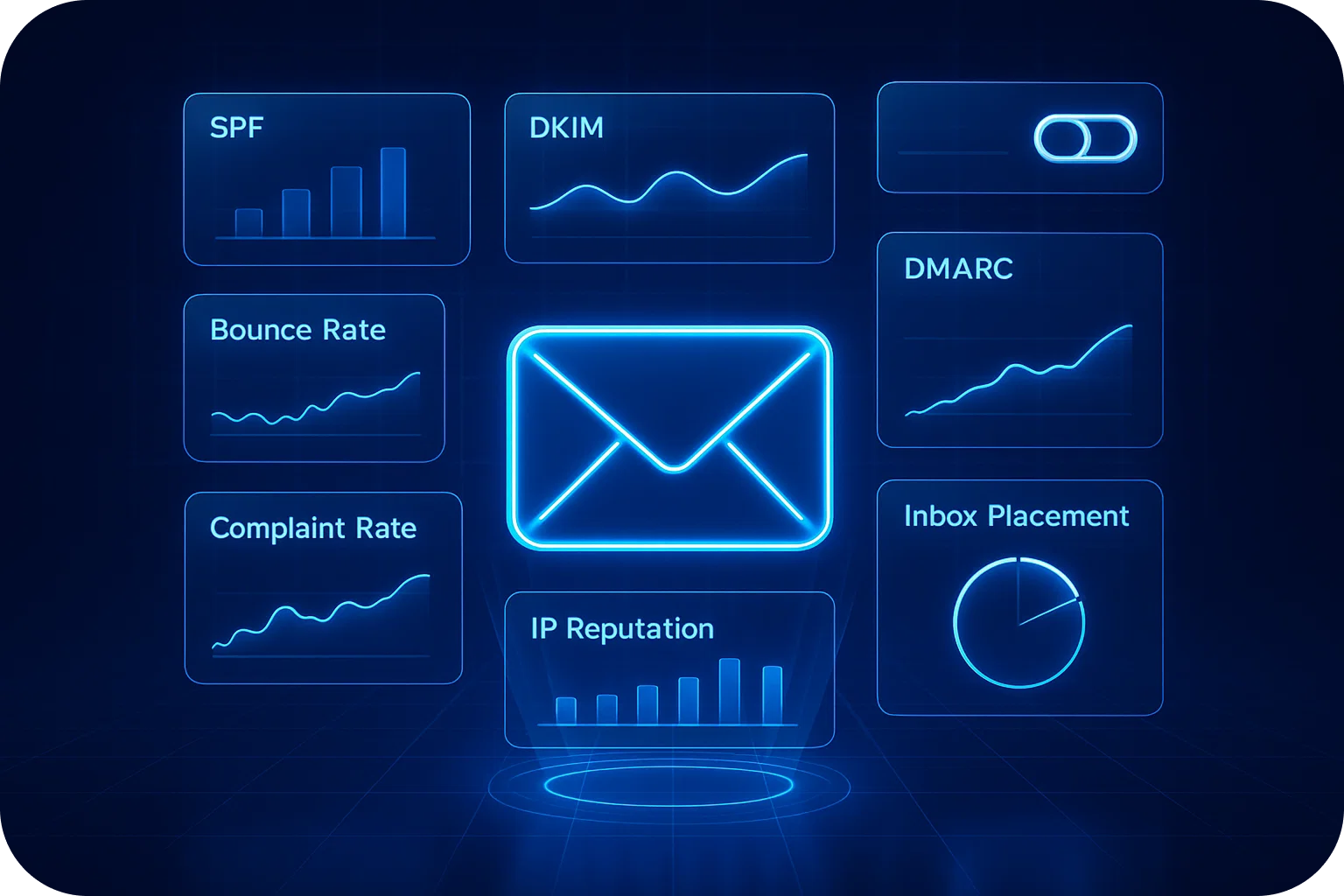The Email Content Audit: 12 Red Flags That Trigger Spam Filters

You've invested in premium domains, warmed up your inboxes, and configured your DNS records perfectly. Your technical infrastructure is flawless. Yet your cold emails still land in spam.
The culprit? Your email content.
Even with pristine sender reputation and perfect technical setup, poorly crafted email copywriting can trigger spam filters and destroy your deliverability rates. According to recent data, content-related issues account for nearly 40% of deliverability problems in cold email campaigns.
This guide reveals the 12 most common content red flags that trigger spam filters, helping you audit your cold email writing and dramatically improve your inbox placement rates.
Why Email Content Matters More Than Ever
Modern spam filters use sophisticated machine learning algorithms that analyze hundreds of content signals. They're not just looking for obvious spam triggers like "FREE MONEY!!!" anymore. Today's filters evaluate:
- Language patterns and writing style
- Link-to-text ratios
- Image-to-text balance
- Personalization depth
- Sender consistency
- Engagement predictions
Gmail's AI-powered filters can even predict whether a recipient will engage with your email before it hits their inbox. If your email content doesn't pass these sophisticated tests, all your infrastructure investments become worthless.
The 12 Content Red Flags That Kill Deliverability
1. Excessive Capitalization and Punctuation
Writing "AMAZING OPPORTUNITY!!!" or "ACT NOW!!!" screams spam. Spam filters flag emails with excessive caps, multiple exclamation points, or aggressive punctuation patterns.
The Fix: Use sentence case for 95% of your email content. Reserve capitalization for proper nouns and the beginning of sentences. Limit exclamation points to one per email, if any.
2. Spam Trigger Words and Phrases
Certain words and phrases have been poisoned by decades of spam. While context matters, these terms consistently trigger filters:
- Financial promises: "Make money fast," "Guaranteed income," "Cash bonus"
- Urgency manipulators: "Act now," "Limited time," "Expires today"
- Clickbait language: "You won't believe," "Secret revealed," "One weird trick"
- Over-the-top claims: "100% free," "Risk-free," "No catch"
The Fix: Audit your cold email writing for these phrases. Replace manipulative language with specific, credible value propositions. Instead of "guaranteed results," try "we helped Company X achieve Y outcome in Z timeframe."
3. Poor Personalization or Fake Personalization
Generic emails get flagged. But fake personalization is even worse. When your merge tags break and send "Hi {{FirstName}}" or when your "personalization" is obviously templated, spam filters notice.
The Fix: Implement genuine personalization that goes beyond first names. Reference specific company details, recent news, mutual connections, or relevant pain points. Test all merge tags before sending.
4. Suspicious Link Patterns
Too many links, shortened URLs, mismatched anchor text, or links to suspicious domains all trigger spam filters. Even legitimate links can cause problems if the pattern looks spammy.
The Fix: Limit links to 1-2 per email. Use your actual domain for links when possible. Avoid URL shorteners (bit.ly, tinyurl) in cold emails. Ensure anchor text accurately describes the destination.
5. Image-Heavy Emails with Little Text
Emails that are primarily images with minimal text are classic spam tactics. Filters can't read images, so they assume you're hiding something.
The Fix: Maintain a healthy text-to-image ratio. Aim for at least 80% text content. If you must include images, ensure they're relevant and accompanied by substantial text. For cold outreach, plain text emails often perform best.
6. Misleading or Deceptive Subject Lines
When your subject line promises one thing and your email delivers another, spam filters take notice. Engagement metrics plummet, and your sender reputation suffers.
The Fix: Ensure your subject line accurately reflects your email content. Avoid clickbait tactics. Test subject lines that are specific, relevant, and honest. "Quick question about [specific topic]" outperforms "You need to see this."
7. Excessive HTML Formatting and Styling
Overly designed emails with complex HTML, multiple fonts, various colors, and heavy styling trigger spam filters. They also look less personal and authentic.
The Fix: Keep email copywriting simple and clean. Use minimal formatting. For cold email writing, plain text or simple HTML with basic formatting (bold, italics) performs best. Your email should look like it came from a real person, not a marketing department.
8. Missing or Broken Unsubscribe Links
Not including an unsubscribe option or having a broken unsubscribe link violates CAN-SPAM regulations and triggers filters. It also frustrates recipients who then mark you as spam.
The Fix: Always include a clear, functional unsubscribe link. Test it regularly. Make it easy to find, typically at the bottom of your email. Honor unsubscribe requests immediately.
9. Inconsistent Sender Information
When your "From" name doesn't match your email signature, or when you constantly change sender names, spam filters flag inconsistency. Recipients also lose trust.
The Fix: Maintain consistent sender information across campaigns. Use real names, not generic terms like "Sales Team." Ensure your email signature matches your "From" name. Build recognition and trust through consistency.
10. Attachment Red Flags
Certain attachment types (.exe, .zip, .scr) are immediate spam signals. Even safe attachments can hurt deliverability if they're unexpected or irrelevant.
The Fix: Avoid attachments in cold emails entirely. Instead, host files on your website or a trusted platform and link to them. If you must send attachments, use common formats (.pdf, .docx) and mention them in your email content first.
11. Lack of Proper Text Structure
Walls of text, missing paragraph breaks, or no clear structure make emails hard to read and appear unprofessional. Spam filters evaluate readability as a quality signal.
The Fix: Structure your email content with short paragraphs (2-3 sentences max). Use white space generously. Include a clear opening, value proposition, and call-to-action. Make your email scannable in under 10 seconds.
12. Generic or Missing Email Signatures
No signature or a generic signature lacking contact information looks suspicious. Legitimate business emails include proper signatures with verifiable details.
The Fix: Create a professional email signature with your full name, title, company, phone number, and website. Keep it simple and text-based. Avoid image-only signatures that filters can't read.
How to Conduct Your Email Content Audit
Now that you know the red flags, here's how to audit your cold email writing systematically:
Step 1: Review Your Last 10 Sent Campaigns
Pull your recent emails and score them against these 12 red flags. Identify patterns in emails with low open rates or high spam complaints.
Step 2: Use Spam Testing Tools
Before sending campaigns, run your email content through spam testing tools. These analyze your content and predict deliverability issues.
Step 3: A/B Test Content Variations
Test different versions of your email copywriting. Compare deliverability rates, open rates, and response rates. Let data guide your content decisions.
Step 4: Monitor Engagement Metrics
Track opens, clicks, replies, and spam complaints. Declining engagement signals content problems that will eventually hurt your sender reputation.
Step 5: Regularly Update Your Templates
Email best practices evolve. Audit your templates quarterly to ensure they align with current deliverability standards.
The Content-Infrastructure Connection
Here's the truth: perfect email content can't overcome terrible infrastructure, and flawless infrastructure can't save terrible content. They work together.
At Mailpool, we see this daily with our 2,000+ customers. Those who achieve our 98% deliverability rate combine our enterprise-grade infrastructure with thoughtful, well-crafted cold email writing. They understand that:
- Technical setup gets your email to the filter
- Content quality gets your email to the inbox
- Value and relevance get your email read and answered
You need all three.
Content Best Practices for Maximum Deliverability
Beyond avoiding red flags, implement these positive practices in your email copywriting:
Write Like a Human: Your email should sound like it came from a real person having a real conversation. Avoid corporate jargon and marketing speak.
Lead with Value: Within the first two sentences, make it clear why this email matters to the recipient. Focus on their needs, not your features.
Keep It Concise: Aim for 50-125 words for cold emails. Longer emails decrease response rates and can trigger filters looking for marketing content.
Include a Clear CTA: One specific, easy-to-complete call-to-action. "Are you open to a 15-minute call next Tuesday?" beats "Let me know if you're interested."
Proofread Ruthlessly: Typos and grammatical errors hurt credibility and can trigger spam filters. Every email should be error-free.
Measuring Content Quality Impact
How do you know if your content improvements are working? Track these metrics:
- Inbox Placement Rate: Percentage of emails reaching the inbox (not spam). Target: 95%+
- Open Rate: Higher opens indicate better subject lines and sender trust. Target: 40%+ for cold email
- Reply Rate: The ultimate metric. Target: 5-10% for well-targeted cold outreach
- Spam Complaint Rate: Should be under 0.1%. Higher rates indicate content or targeting problems
- Unsubscribe Rate: Under 0.5% suggests your content is relevant and valuable
When you fix content red flags, you'll see these metrics improve within 2-3 weeks.
Common Content Audit Mistakes to Avoid
As you improve your cold email writing, avoid these common pitfalls:
Over-Optimization: Don't make your emails so bland that they lose personality. Balance deliverability with engagement.
Ignoring Your Audience: What works for SaaS sales might not work for agency outreach. Tailor your email content to your specific audience.
Neglecting Mobile: Over 50% of emails are opened on mobile. Ensure your content is readable on small screens.
Forgetting to Test: Never send a campaign without testing. Send test emails to multiple providers (Gmail, Outlook, Yahoo) and check spam folders.
Your Action Plan
Ready to audit your email content and boost deliverability? Start here:
- Review your last 5 email campaigns against the 12 red flags listed above
- Identify your top 3 content issues
- Rewrite your primary email template addressing these issues
- Test the new version with a small segment
- Measure deliverability and engagement improvements
- Roll out successful changes across all campaigns
Remember: email copywriting for cold outreach is both an art and a science. The art is crafting compelling, relevant messages. The science is understanding what triggers spam filters and optimizing accordingly.
Conclusion
Your email content is the final gatekeeper between your message and your prospect's inbox. You can have perfect DNS records, warmed inboxes, and premium infrastructure, but poor email copywriting will sabotage everything.
The good news? Content is entirely within your control. Unlike technical infrastructure that requires specialized knowledge, improving your cold email writing is straightforward once you know what to avoid and what to optimize.
Audit your content regularly, test continuously, and always prioritize genuine value over clever tactics. When you combine thoughtful email content with robust infrastructure, you'll achieve the deliverability rates and response rates that make cold email a powerful growth channel.
Your prospects are waiting. Make sure your emails actually reach them.
More articles
Get started now




%201.png)





